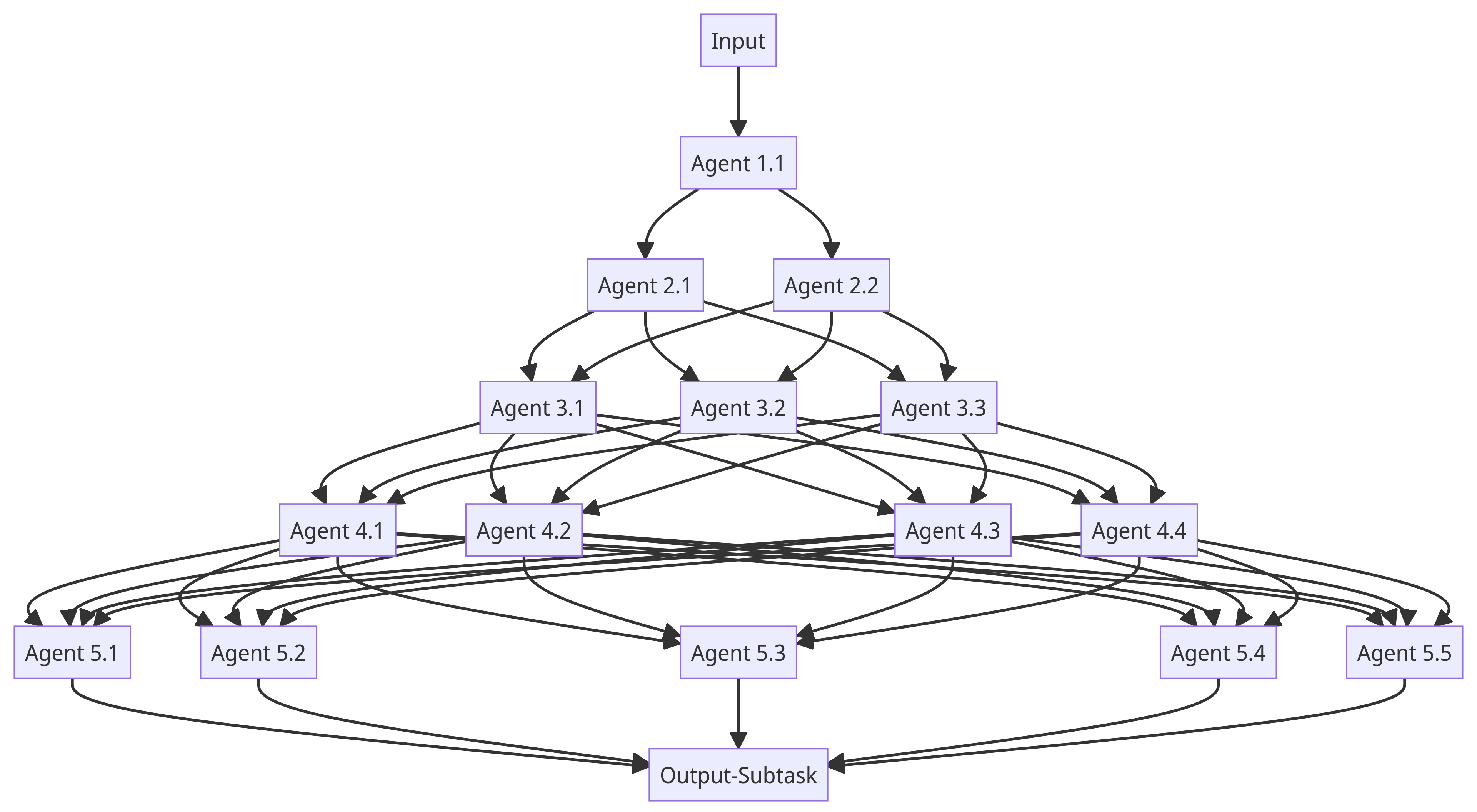Abstract
In the realm of artificial intelligence and machine learning, the trajectory of data through a series of computational agents forms a complex narrative. This paper explores this narrative through the lens of a hierarchical model, wherein data undergoes a series of transformations, each conducted by a distinct agent. The M.E.L.A.N.I.E. framework, an acronym encapsulating the stages of the thought process within this model, is introduced to streamline the process.
Introduction
The initial stage of data processing commences with the input data, which can originate from diverse sources such as text, images, or complex structured data. This raw, unprocessed information forms the foundation of the computational journey. This stage aligns with the Mapping phase of the M.E.L.A.N.I.E. framework, where the subject is presented, and its core aspects are outlined, forming a conceptual ‘map’ of the topic.
Data Transformation and Elaboration
The first computational agent, Agent 1.1, initiates the transformation process. This agent may apply initial filtering, normalization, or feature extraction to render the data more tractable for downstream agents. The output of Agent 1.1 serves as the input for subsequent layers of agents. This stage corresponds to the Elaborating phase of M.E.L.A.N.I.E., where the topic is explored in depth, generating various perspectives, questions, and counterarguments.
Parallel Processing and Layering
The data then bifurcates into two paths, each leading to a distinct agent in the second layer: Agent 2.1 and Agent 2.2. These agents operate in parallel, processing the data independently and potentially focusing on different aspects of the information. This stage corresponds to the Layering phase of M.E.L.A.N.I.E., where multiple layers of analysis, refinement, and thought are added, enriching the dialogue.
Further Analysis and Diversification
The journey continues to the third layer, where the data branches out into three separate paths, each leading to a different agent: Agent 3.1, Agent 3.2, and Agent 3.3. These agents continue the process of transformation and extraction, further refining the understanding of the data. This stage corresponds to the Analyzing phase of M.E.L.A.N.I.E., where the conversation thus far is scrutinized, reflected upon, and evaluated.
Navigating Through Complexity
As we progress to the fourth layer, the data branches out into four paths, each leading to a different agent. These agents, 4.1, 4.2, 4.3, and 4.4, continue the trend of parallel processing, each contributing a unique perspective to the overall understanding of the data. This stage corresponds to the Navigating phase of M.E.L.A.N.I.E., where based on feedback and analysis, new avenues are explored, and a strategic plan is devised.
Integration and Synthesis
In the fifth layer, the data splits into five paths, each leading to a different agent. These agents, 5.1, 5.2, 5.3, 5.4, and 5.5, represent the culmination of the data processing journey. They take the refined, processed data from the previous layers and apply the final transformations necessary to prepare the data for output. This stage corresponds to the Integrating phase of M.E.L.A.N.I.E., where all ideas, discussions, and plans are integrated and synthesized, forming a comprehensive view.
Conclusion and Expression
Finally, the processed data from each of theagents in the fifth layer converges to form the output. This output represents the final product of our journey, the result of the transformations and processing applied by each agent in the model. It is the end of our data’s journey, but the beginning of its utility, as it is now ready to be used for prediction, classification, or any other task for which the model was designed. This stage corresponds to the Expressing phase of M.E.L.A.N.I.E., where the overall summary, insights, and final thoughts are articulated, concluding the thought chain.
Discussion
The journey of data through the layers of agents in our model is a testament to the power and complexity of data processing models and the vital role that each agent plays in the grand scheme of things. The M.E.L.A.N.I.E. process adds a layer of strategic thought to this journey, guiding the flow of data and ensuring a comprehensive and insightful output. This framework provides a structured approach to data processing, enabling the model to handle complex tasks and extract meaningful insights from the data.
Conclusion
In conclusion, the M.E.L.A.N.I.E. framework provides a structured and strategic approach to data processing in a hierarchical model. By guiding the flow of data through a series of computational agents, each contributing to the transformation and understanding of the information, the framework enables the extraction of comprehensive and insightful output from raw input data. Future work will focus on optimizing the performance of individual agents and exploring the application of this framework in various domains.

